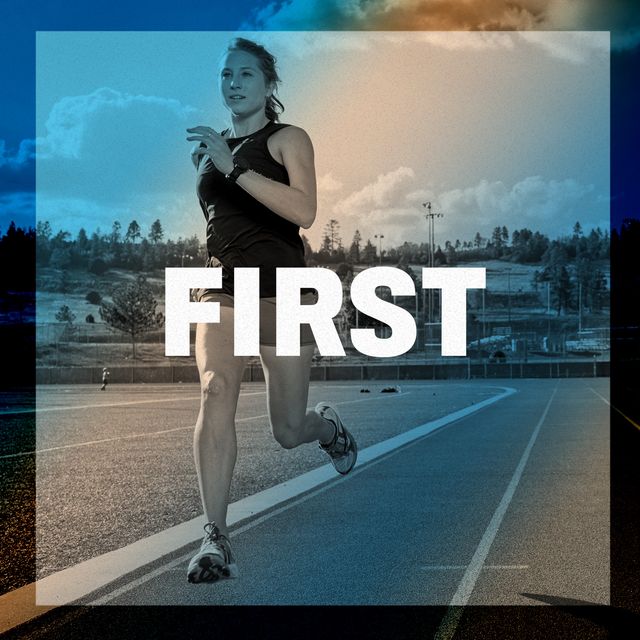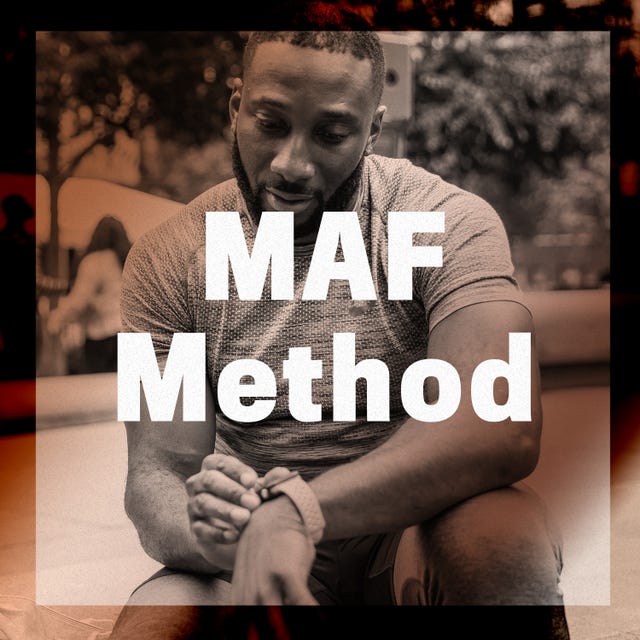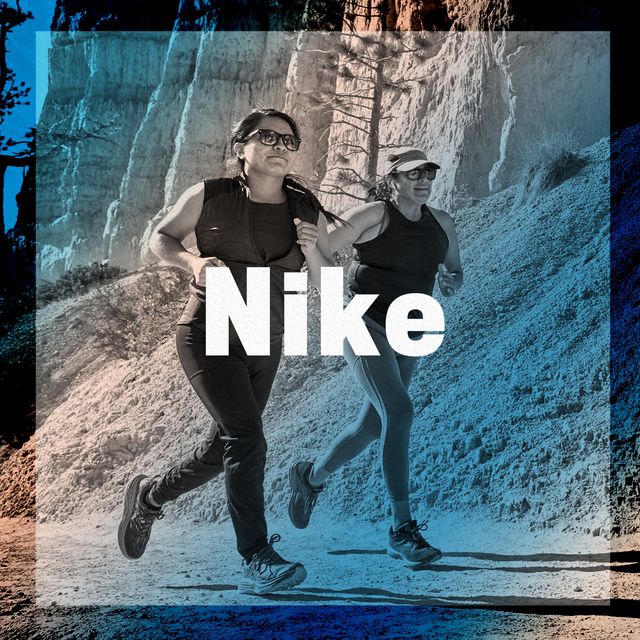Committing to running a marathon is a big. deal. Whether you’re a first-timer or a seasoned pro, training for 26.2 miles takes a minimum of four months of physical and mental prep. And finding the right training plan? Well, that can be just as overwhelming as making that initial commitment to run.
Not only do you need a plan that gets you to the finish line, you need one that’s going to get you to the starting line feeling strong, healthy, and confident. That will look different to every single runner. Some people respond well to logging high mileage six days a week; others prefer lower-intensity plans that allow for more cross-training.
No matter what any other runner tells you about the plan they swear by, the best marathon training program is one that works for you. That’s why we’re breaking down everything you need to know about the most popular marathon training plans—including insider details from real people who’ve used these plans to cross the finish line.
Below, you’ll see the plans we reviewed along with the type of runner for which each plan is best suited. Click the “learn more” button to get the specifics on that plan or keep scrolling down to read about all the plans.
➔ Hal Higdon
PROS
- Basic plans are free on the website
- It’s designed for regular people (i.e. encourages rest and allows for missed workouts)
- It provides thorough explanations on exactly how to include strength and cross-training
CONS
- Some experienced runners may think this plan is too easy
- There’s not a big focus on speedwork, drills, or harder efforts
- The free plans can be difficult to customize on your own
Who it’s best for: new runners and first-time marathoners
What to expect: Hal Higdon’s Novice 1 Marathon Training Program is his most popular training program (it’s been used by more than a million runners). The progressive plan—which consists of four days of running per week and two days of rest—starts with a six-mile long run and gradually works up to a 20-miler three weeks before race day. The long run is the key to the program; you can miss the occasional weekday workout, but don’t skip that one. Cross-training is built in on Sundays, and strength training can be added on Tuesdays and Thursdays.
What makes it different? Higdon is the architect of the traditional marathon training plan, and so his programs are an accessible entry point for most first-time (or even some more experienced) marathoners.
Why it’s legit: Hal Higdon ran competitively (and won several conference championships) at Carleton College in Minnesota before competing eight times in the Olympic Trials (his best finish was fifth place at the 1960 Trials in the 3000-meter steeplechase). He also placed fifth overall in the 1964 Boston Marathon and was the first American finisher with a time of 2:21:55. Higdon is the author of more than three dozen books, including Marathon: The Ultimate Training Guide, and Run Fast, How to Beat Your Best Time Every Time.
Can you customize it? Higdon offers 14 different marathon training programs on his website, from Novice 2 (designed for runners who have already completed a marathon and want to improve their times) to Intermediate and Advanced, as well as more specific plans designed for senior runners, experienced runners attempting to PR, and even an alternate guide for runners whose marathons have been canceled. You can also use the Run With Hal+ app ($6.99) to personalize any of Higdon’s plans.
For more tools, expert advice, and access to additional training plans, join Runner's World+ today!
Real runner review: “I once made the mistake of running a marathon with no specific training, and it was a miserable experience. Determined to do better next time, I jumped online to see how I should have trained and found myself on Hal Higdon’s site. Hal’s training plan—especially the Intermediate 2 marathon training plan—became my roadmap for successively faster marathons. What I like about Hal’s approach is that he’s not trying to reinvent the wheel or hack marathon training—he’s been around runners for decades, lives and breathes marathons, and therefore has an intuitive grasp of what works and what doesn’t. His plans are designed for regular people; he talks a lot about molding the plan to suit your family life and other commitments, and reiterates that missing a workout or two isn’t the end of the world.” —Thomas Watson, UESCA-certified running coach and founder of the Marathon Handbook
How much it costs: free, available at halhigdon.com
➔ Jeff Galloway
PROS
- It’s super accessible to new runners
- The focus is on staying injury-free
- It prioritizes time on feet over speed, which helps with mental preparation
CONS
- At 29 weeks, it’s a lot longer than most marathon training plans
- There’s a lot of walking when you might prefer running
- There’s no variation in running paces (i.e. speed work, tempo runs, recovery runs)
What to expect: You run, then you walk, then you repeat. Your run-walk-run ratio is determined by your pace (a nine-minute miler, for example, would run for two minutes, then walk for 30 seconds). You’ll run 30 minutes every Tuesday and Thursday, walk every Friday, and then build your mileage (up to 26 miles) every other Sunday. Cross-training can be added in on Mondays, Wednesdays, and Fridays.
What makes it different? Galloway designed this method in 1973 to help beginners start running. The strategic walk breaks—based on your overall pace—allow you to manage fatigue, which cuts down on the risk of injuries.
Who it’s best for: total beginners or injury-prone runners
Why it’s legit: Jeff Galloway was a member of the 1972 U.S. Olympic Team in the 10,000 meters (and an alternate for the marathon), set an American 10-mile road race record (47:49), and won the Honolulu Marathon in 1974. In 1973, Galloway designed the run-walk-run training method to help beginners start running. He published Galloway's Book on Running in 1984, and has published a number of books since.
Can you customize it? Because the run-walk-run ratio is based on your pace, the plan is inherently customized. You can customize it further by adding in your own cross-training plan.
For strength tips and workouts to go with your marathon training plan, join Runner's World+!
Real Runner review: “I like running best when it feels like an escape or release, and it’s not painful. This method allowed me to be more mindful since I could focus on breathing and not exhaustion—and so I felt like I had more energy to engage in my surroundings and the event. For my first marathon in 2013, I trained just by running a lot and working on my distance, and I hit the wall at mile 19. This plan felt more sustainable, and when I used it at the 2017 Marine Corps Marathon—with run/walk notifications pre-set into my phone—I ended up running nearly 20 minutes faster than in 2013, despite being older and slightly heavier. I also noticed it was the first marathon where I wasn’t totally physically wrecked after the finish. I used to be a mess after a marathon finish, and this time, while exhausted, I still had the energy to talk, walk, get my checked gear, and go down stairs.” —Sharon Rosenblatt, 32, Ridgefield, CT
How much it costs: free, available at jeffgalloway.com
➔ FIRST
PROS
- The exact paces and distances are provided for all runs so there’s no confusion
- Reduces overtraining, burnout, and injury risk
- Prioritizes cross-training
CONS
- Requires a base of 16 to 20 weekly miles to start
- There’s no easy running and lots of speedwork, so it may feel too hard
- Long runs are meant to be 60 to 75 seconds slower than your 10K pace (that’s fast)
What to expect: The The Furman Institute of Running and Scientific Training (FIRST)
training plan calls for just three days of running per week: one long run (building up to 20 miles), one tempo run, and one speed workout (the book Train Smart, Run Forever details the exact mile times to aim for on each of the three running workouts, according to a runner’s individual speed). Instead of running more, participants are encouraged to do two additional days of intense cross-training and prioritize recovery methods like rolling, stretching, and icing.
What makes it different? Ideally, the lower mileage volume will decrease your chances of overtraining and burnout, as well as your injury risk, compared to more traditional marathon training plans.
Who it’s best for: experienced marathoners looking to get faster or runners with time constrictions
Why it’s legit: Exercise science experts Bill Pierce and Scott Murr created The Furman Institute of Running and Scientific Training (FIRST) program after competing in a few triathlons in the mid-1980s. Pierce is a professor emeritus of health sciences at Furman University and an experienced marathoner, while Murr is the Training Performance Director of FIRST, an assistant professor of health sciences at Furman University, director of the Molnar Human Performance Laboratory, an experienced marathoner, and a 12-time Ironman Triathlon finisher. The two are also co-authors of Runner's World’s Run Less Run Faster (2012) and Train Smart, Run Forever (2017).
Can you customize it? Your individual pace will determine the speeds for each workout you do, which makes this plan unique to you. Runner’s World has published some examples of what paces different workouts would call for depending on your 5K pace.
Real Runner review: “I follow the FIRST running plan religiously whenever I’m preparing for a race. What I love about the plan is that it offers precise pacing and distances, so you know what to expect. Mentally preparing yourself for exercising is truly the key to reaching your goals. Compared to Jack Daniels’ running formula, which I’ve used in the past, it was easier to integrate into my life, with just three runs per week and two days of cross-training. Although you (can) gradually increase the intensity of the plan, it’s the scientific background that helps it become a routine. And the more familiar you become with FIRST, the easier it gets mentally while still challenging you physically." —David McHugh, 26, Denver, CO
How much it costs: free, available at FIRST
➔ Hanson Method
PROS
- Shorter long runs are good for runners who may have previously burned out
- Faster overall paces are aimed at accustoming athletes to marathon pace
- The plan thoroughly explains all paces and how to include cross-training
CONS
- There’s no planned cross-training.
- The high training volume could lead to an increased risk of overtraining and injury
- There’s not much room for customizing or modifying the plan
What to expect: This plan calls for six days of running per week. Despite the fact that it emphasizes higher mileage, though, the long run is capped at 16 miles. There are three workouts per week: speed sessions, tempo runs at goal marathon pace, and long runs; then, you’ll do three days of easy recovery running. You get one day of recovery (sandwiched between two speedier days). The point is to get you used to running long on tired legs, which builds physical and mental endurance.
What makes it different? Most traditional marathon training plans call for at least one 20-mile run. The lack of that is one of the main principles of the Hansons’ marathon philosophy. This plan prioritizes higher mileage, but the long run accounts for a smaller percentage of the work—allowing runners to recover more easily and reduce their potential for injury.
Who it’s best for: intermediate or experienced marathoners accustomed to high mileage
Why it’s legit: The Hanson brothers—Keith and Kevin—are elite coaches who founded the Hansons Distance Project in 1999 to coach post-collegiate distance runners on a national and international level. In 2003, Brooks Running signed on as a co-sponsor of the team, which is now known as the Hansons-Brooks Distance Project. The brothers own several running stores in suburban Michigan, and wrote the book Hansons Marathon Method: A Renegade Path to Your Fastest Marathon.
Can you customize it? Not really—the entire plan is built around the idea of cumulative fatigue, so shuffling runs or changing distances and paces may undermine that goal. Some runners do opt to extend the long run.
Real Runner review: “Before I read the Hansons’ book, I had been running just slightly under three hours for the marathon distance—but in those races, I always struggled the last few miles as my body started to wear down. I liked how they explained why their plan was set up the way it is, and my two favorite parts are the tempo runs and the long run. As the distance of the tempo runs gradually increases, you get used to running marathon pace for longer periods of time, which builds the mental strength needed for a marathon and the confidence that you can sustain that pace on race day. I also felt like the long runs really increased my leg strength and my ability to sustain marathon pace late in the race. In 2019, I used this plan while training for Boston to Big Sur, where I ran 2:45:57 at Boston and 2:43:57 at Big Sur (13 days apart).” —Matthew Hunsucker, Denver, CO
How much it costs: free, available at hansons-running.com
➔ Runner’s World Break 4:00
PROS
- This plan is specifically geared toward marathoners who want to break four hours
- It provides super-detailed explanations of every single day (including rest days)
- Subscribers get direct access to a certified Runner’s World coach
CONS
- Access to the Runner’s World coach only comes with a monthly or yearly subscription
- You should have a base of at least 25 miles per week before starting this plan
- Six days a week of running can be a lot for some people
What to expect: Runner’s World’s most popular marathon training program, “Break 4:00,” starts with 26 miles a week and a 10-mile long run, and peaks three weeks before the race with 48 miles and a long run that’s 22 miles. Most weeks feature one day of rest and six days of running, and include workouts like intervals, Yasso 800s, and tempo runs (along with detailed instructions on pace and distance), plus tips on nutrition, gear, racing, and staying motivated and injury-free. (Runner’s World has five other time-based plans available as well if your goal is to break 3:45, 3:30, 3:15, or 3:00.)
What makes it different? Runner's World+ plans include day-by-day workouts and tips in addition to access to RRCA-certified run coach Jess Movold, who provides custom workouts and answers questions on Instagram and in a members-only newsletter each week. Joining Runner's World+ also provides unlimited access to Runner's World digital stories, an annual print subscription, and unlimited access to 17 more training plans at different races and paces. Join Now!
Who it’s best for: runners of all levels who don’t want to go through the training process alone
Why it’s legit: Runner’s World originally launched in 1966 by runner Bob Anderson. Since then, it’s remained a globally-circulated magazine for runners of all skill sets. Runner’s World+, with over 13,500 current active members, offers unlimited access to 18 plans (from the 5K up to the marathon), designed to match your pace with day-by-day workouts and tips. Members get access to Movold, who provides custom workouts and answers questions on Instagram and each week in the members-only newsletter.
Can you customize it? To the extent that you can move your workout days around, sure. RW+ members also have direct access to a coach who can help them do that in a smart, strategic way.
Real Runner review: “I loved the simplicity of the training plan. For somebody who was spending a lot of time traveling for work, it was incredibly helpful to have every single day laid out for the next 16 weeks. It allowed me to shift around runs if I knew I had certain days that would be brutal and didn’t think I would have the time or energy to knock out an eight- or nine-mile tempo run. I think people get really caught up in their training plans and can get so deep into their heads about what they’re doing or what they think they should do and this just…removes all of that. The only negative is that without the RW+ subscription, you don’t have anybody to ‘check-in’ with during the training cycle.” —Mack Baker, New York, NY
How much it costs: $9.99 or included in RW+ membership ($5/month for digital-only, $50/year for All Access)
➔ MAF Method
PROS
- This method improves aerobic fitness and the percentage of calories burned from fat
- It helps you naturally increase your pace without overtaxing your body
- Aerobic training can reduce inflammation, lower stress hormones, and prevent injuries
CONS
- There’s no scheduled training plan
- People who like running fast may feel held back
- Understanding this method takes a significant time investment
What to expect: MAF stands for Maximum Aerobic Function, and this training plan focuses on building your aerobic system through low heart rate training. You start by calculating your maximum heart rate (using the basic formula of 180 minus your age, plus a few additional adjustments, like subtracting two or three beats if you only work out one to two days a week). All your runs are done below that max heart rate. During those runs, the first mile will be the fastest; you’ll get slower with each additional mile as your heart rate increases.
What makes it different? It’s not so much a training plan as adjusting your entire approach to running. The MAF Method prioritizes easy, aerobic running that helps you improve your pace without speedwork or other training that overtaxes your body. Maffetone recommends testing yourself once a month; those tests should indicate faster times as the months go by, which means your aerobic system is developing, and you’re burning more fat, enabling you to do more work with the same effort.
Who it’s best for: runners of all levels who don’t prefer high-intensity training
Why it’s legit: The MAF Method is named for Phil Maffetone, a clinician, researcher (he studies human biology, kinesiology, physiotherapy, and biofeedback) and coach (he worked with Mark Allen, a six-time Ironman Triathlon Champion) who developed the max heart formula. He’s also written a number of fitness books, including The Endurance Handbook: How to Achieve Athletic Potential, Stay Healthy, and Get the Most Out of Your Body.
Can you customize it? The MAF method is entirely customized to your fitness level because it’s based on your maximum heart rate.
Real Runner review: “One of the things that drew me to MAF training was the idea that I could run with less stress on my body. As someone who has had hormonal issues, I found I could actually run more mileage and run PR’s by using a low heart rate to keep my runs easier. As a coach, I’ve found it’s a great tool for teaching runners that easy is what it feels like to your body, not your pace.” —Amanda Brooks, run coach and founder of RunToTheFinish
How much it costs: $9.99 on Amazon or philmaffetone.com
➔ McMillan
PROS
- McMillan’s calculator helps you hone in on a reasonable goal time
- This plan also offers prehab programs that include core, strength, and mobility
- You can easily move runs around based on your life schedule
CONS
- It’s easy to get too caught up in the paces
- Some runners prefer running by distance instead of time on feet
- The taper is only two weeks
What to expect: McMillan offers a long list of marathon training plans tailored to three different types of runners, but most are based on his 16-week sequence of progressive long runs, marathon workouts, and goal pace workouts. Each plan is separated into phases or blocks of training weeks that have their own purpose, with the exact pace range for each run or workout determined using the McMillan Running Calculator.
What makes it different? McMillan’s training plans look different from other popular programs because, for most runs, he prefers you to track time running instead of miles (the long runs are still distance-based, though, which means you could be logging up to 24 miles depending on your pace.)
Who it’s best for: runners who want a “customized” plan without hiring a coach
Why it’s legit: Greg McMillan is an exercise physiologist and USATF- and RRCA-certified coach who was a National Champion in the USATF Masters Trail Marathon (2009). In 2002, he founded McMillan Running, which has helped more than 2,000 runners qualify for and run the Boston Marathon. He’s also the creator of the McMillan Running Calculator, which calculates your current and goal paces. McMillan is the author of Surviving the Marathon Freak-Out.
Can you customize it? Entering your times into the McMillan Running Calculator gives you customized pace ranges, so each workout is tailored to your fitness level. You can also add on preparatory plans that help you build (or rebuild) fitness or work on improving a specific ability before starting a race-specific plan.
Real Runner review: “I used the McMillan plan for a marathon in December of 2013 and totally crushed it with a 3:24! The plan is mostly time- versus mileage-based, which I’ve adapted to really well as I’ve gotten older—I get the same workouts now as I did then, just with fewer miles. I loved that I was able to let them know I’m more of an ‘Endurance Monster’ versus a ‘Speedster,’ so I had more cross-training days instead of speed workouts, and that the plan provided links for research as to why you were doing the type of run you were doing. I still follow the plan now and I was able to BQ my latest race.” —Linda Malarkey, 51, New Milford, CT
How much it costs: $39.99, available at finalsurge.com
Have questions about your training? Runner’s World+ coach Jess Movold answers Runner’s World+ questions in the weekly member-exclusive newsletter and on the program’s community page.
Learn More
➔ Jack Daniels
PROS
- The VDOT score provides precise pacing for every workout
- It’s very individualized
- The majority of each training week is easy running
CONS
- There are only two workouts per week
- The plans can be difficult to interpret
- You need to have run a recent race to figure out your VDOT score
What to expect: Daniels has a number of marathon training plans available for 15, 18, or 24 weeks of training. One of the standards is the 2Q Program, an 18-week training program that features two quality (“Q) workouts per week: the long run, and a medium-long workout. He also suggests a weekly mileage goal, and you have to figure out how to divvy up the rest of the miles (which are meant to be easy!) based on the advice in his book.
What makes it different? Daniels uses a VDOT score (technically, your VDOT score is the amount of oxygen you consume during a minute of running), to measure your current running ability. Based on pace and distance, it assigns a score to your performance, which allows you to determine exactly how fast you should do each training run to get the max benefits from different speeds.
Who it’s best for: numbers-obsessed runners
Why it’s legit: Jack Daniels is an exercise physiologist, two-time Olympic medalist (in the modern pentathlon in 1956 and 1960), and running coach. He has coached SUNY Cortland runners to eight NCAA Division III National Championships, 31 individual national titles, and more than 130 All-America awards, in addition to coaching seven athletes to the U.S. Olympic team and advising Olympians such as Jim Ryun, Joan Benoit, and Ryan Hall. He wrote Daniels’ Running Formula, which outlined his training plan, in 1998, and he is currently part-owner and head coach of The Run SMART Project.
Can you customize it? Once you purchase a training plan, you’ll fill out a questionnaire that provides Daniels and the Run SMART coaches with details about your running history; a coach reviews your profile to customize your training to fit your background. Even the basic 2Q plan comes with seven sub-plans for different weekly mileage, with details that vary with fitness levels.
Real Runner review: “My wife and I train for the Big Basin Marathon every year, and we’ve each seen substantial time improvement using Jack Daniels’ plan. It’s worked for us mostly because of its clarity, simplicity, and firm guidance. The best takeaway from Daniels’ training plan for us is the intensity point system. This really makes it easy to track the amount of time we spend at each level. My wife and I are both big ‘number people’ so being able to track and prevent overtraining as well as getting sufficient recovery is paramount for us.” —Andrew Cunningham, Tucson, AZ
How much it costs: starting at $70, available at runsmartproject.com
➔ Nike
PROS:
- You can start this plan anywhere between 18 and 12 weeks before race day
- Audio-guided runs are available in the Nike Run Club app
- It pairs with the Nike Training Club App for cross-training workouts
CONS:
- You’ll have to run with headphones to take advantage of the audio-guided runs
- There’s no direct access to a coach
- You’ll need to know or guess your race (mile, 5K, 10K, tempo, and recovery) paces
What to expect: This 18-week plan was designed to appeal to all experience levels and allow for flexibility no matter your schedule (it even says you can jump in with just 12 weeks to race day). Each week consists of five days of running, prioritizing speed runs and long runs and rounding things out with three recovery runs and two rest days. There’s also info on how to find your paces, a glossary, and in-depth answers to any “what ifs” that might come up in training.
What makes it different? Nearly all of the 90 speed, recovery, and long runs in this training plan have an accompanying Audio Guided Run in the Nike Run Club app.
Who it’s best for: runners of all levels, particularly those who are interested in audio guidance along the way
Why it’s legit: Nike founded in 1964 as Blue Ribbon Sports by Bill Bowerman, a track-and-field coach at the University of Oregon, and his former student Phil Knight. They launched the Nike brand shoe in 1972. Now, Nike sponsors record-breaking athletes such as Geoffrey Kamrowor, Brigid Kosgei, and Eliud Kipchoge, the first human ever to run a sub-two-hour marathon. The brand also sponsors the Bowerman Track Club, which now counts four-time Olympian and New York City Marathon champion Shalane Flanagan as a coach. The audio-guided runs in the app are led by experts like Nike Global Head Coach Chris Bennett and Nike-sponsored pros such as Mo Farah, Paula Radcliffe, Elaine Thompson, and Shalane Flanagan.
Can you customize it? The entire plan is spelled out for you in the PDF, but you can also use the NRC app to generate a more personalized plan. You fill in your race date, activity level, what qualifies as a long run to you right now, a recent race of best effort time, how many runs you prefer per week, and the app will spit out a customized plan.
Real Runner review: “I’ve used the Nike training plan in the app for a few half marathons and a marathon. It gave me daily updates as to what mileage I needed to run and the type of run and adjusted my paces for the workouts based on my prior runs. You’re also able to move around your workouts if things come up. I liked the idea of having all my data in one place—I was able to look back at my runs easily and see improvements and areas I needed to work on. It was a great way to get a training plan that adjusted to my fitness ability at no cost.” —Marni Opatowsky, New York, NY
How much it costs: free, available at nike.com
➔ Runcoach
PROS
- Individualized training based on your fitness
- App updates your workouts based on how well you hit your workouts
- Coaches provide feedback in a timely manner
CONS
- Can be a challenge for newer runners
- You need to have run a recent race to figure out your baseline
What to expect: Runcoach is a web and smartphone app (iOS and Android) that spits out a customized training plan for you, based on your goals, and then adapts that plan as you go, based on your performance. The app uses your running information to generate a training plan full of variety—interval sessions, recovery days, long runs, tempo-paced efforts, strides, cross-training, and more—that lays out the path to your goal based on the amount of time you have before a given race.
What makes it different? What you’re prescribed on day one will likely look different a week or two later. When you log your workouts regularly and offer feedback on how they went, the algorithm will start adjusting the plan. Instead of one training philosophy, Runcoach incorporates its development team’s shared knowledge of the sport—collectively shaped by famed coaches like Jack Daniels, Frank Gagliano, and Vin Lanana. Tom McGlynn, founder and CEO of Runcoach, has worked with all of these legends. “The app looks at current fitness level versus peak fitness, and utilizes stress and rest to bridge the gap,” McGlynn said.
Who it’s best for: Runners who want a virtual coach to break through plateaus
Why it’s legit: McGlynn has worked with a lot of legendary coaches and is putting their knowledge to use here. “Through those experiences, I learned a clear methodology for developing runners, and figured there had to be a way to implement that for the everyday runner,” McGlynn said. Along with McGlynn, you’ll get feedback from other real USATF-certified coaches and runners like Hiruni Wijayaratne, the Sri Lankan national record holder in the marathon. The Runcoach system has the data to back up what it’s preaching as well. On average, runners and walkers who train with Runcoach have improved their race finish times by 7 percent.
Can you customize it? It all starts with your goal, whether you want a faster 5K or a PR in the marathon. After you enter your most recent race as a baseline of your fitness and get a schedule set up for a goal race, you can use your favorite tracking watch/service (Garmin, Runkeeper, Strava, Apple Watch, and FitBit) or the Runcoach app to keep your runs logged. If you happen to get sick or life gets in the way and you miss a workout, the app uses its algorithm to recalculate your plan (or the coaches will help you adjust).
Real Runner review: “I had been running marathons and half marathons for nearly a decade with some success, but big goals were still out of reach, namely qualifying for Boston with enough wiggle room to not get cut-off even if I did run a fast enough time. That’s a big reason I started working with the team at Runcoach. I first tried the app consistently to train for a half marathon at Rehoboth Beach—in four weeks—and ran a PR of 1:20. I stuck with them for my marathon training in 2019, aiming to do the Pittsburgh Marathon in May. What I liked best about their program was the regular feedback and harder-than-average workouts (something I needed to get out of my comfort zone). The app did a great job of updating workouts based on my ability to nail a particular run or take some time off. (It’s really nice if you’re sick for a week that the app and the coaches know how to adjust in real-time.) Not only did I run my best marathon in Pittsburgh with my family there, but I also broke 3 hours for the first time ever!” —Brian Dalek (Director of Content Operations for Runner’s World), Emmaus, PA
How much it costs: $19.95 per month or $130 per year, at runcoach.com

































